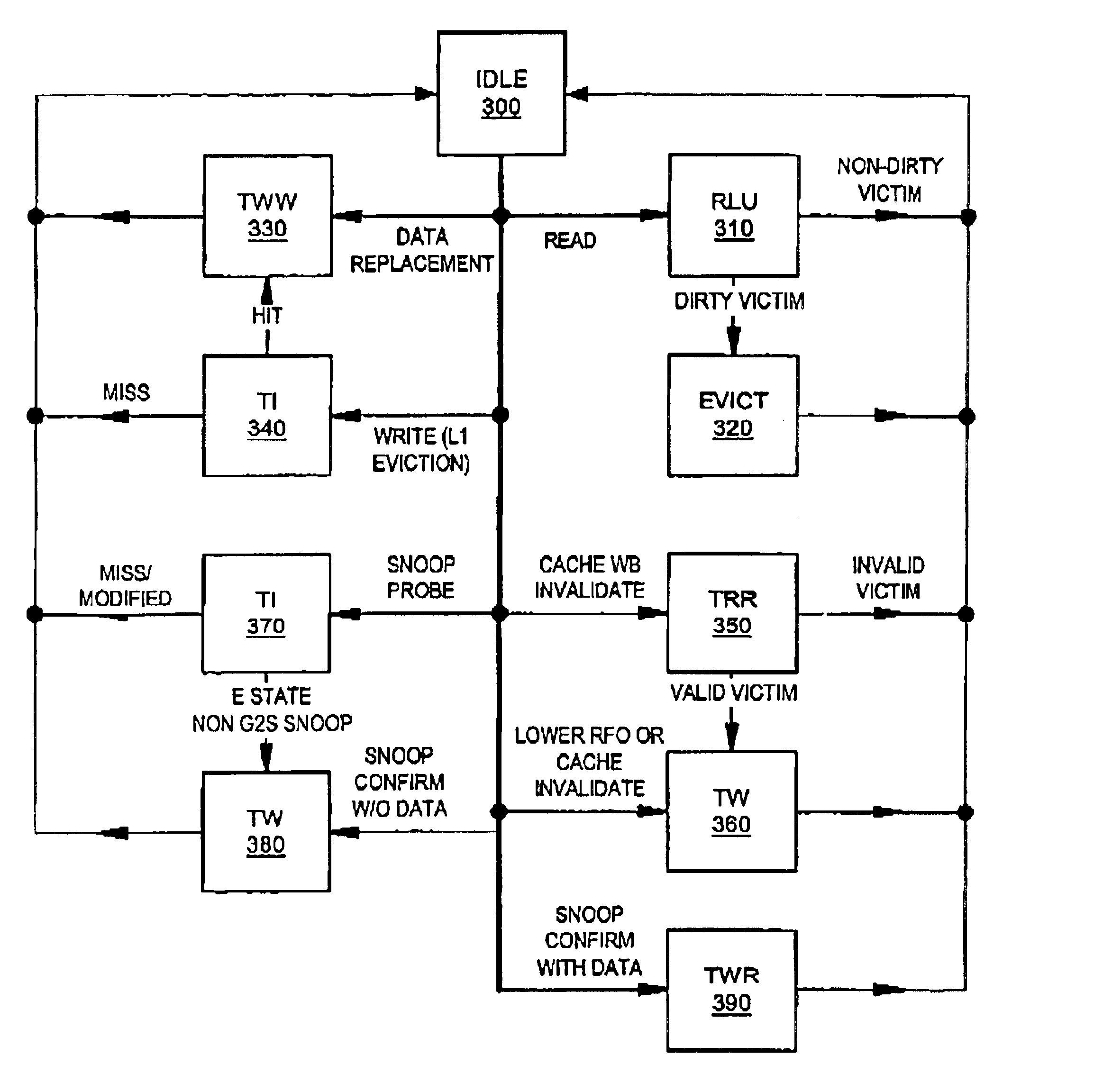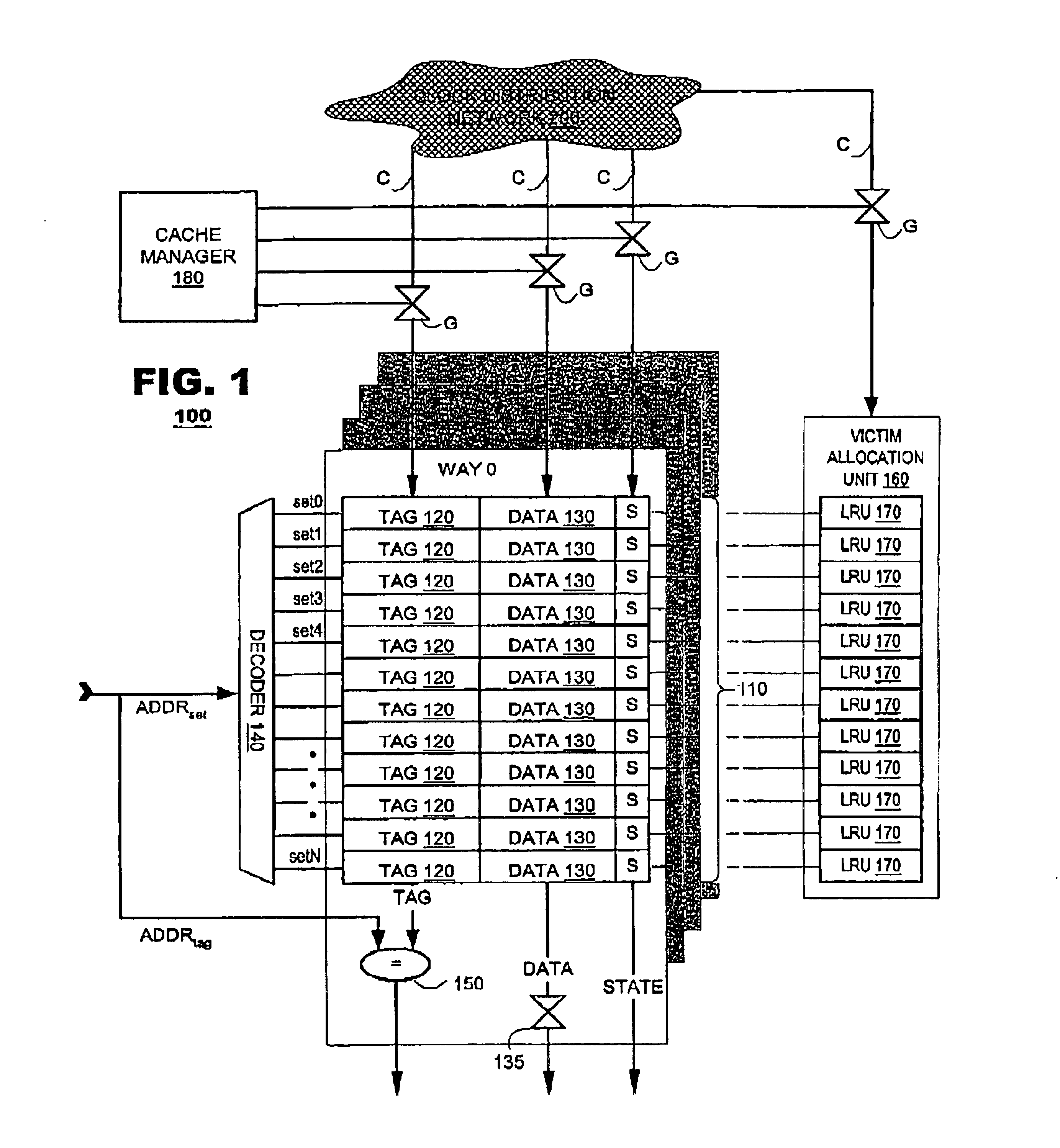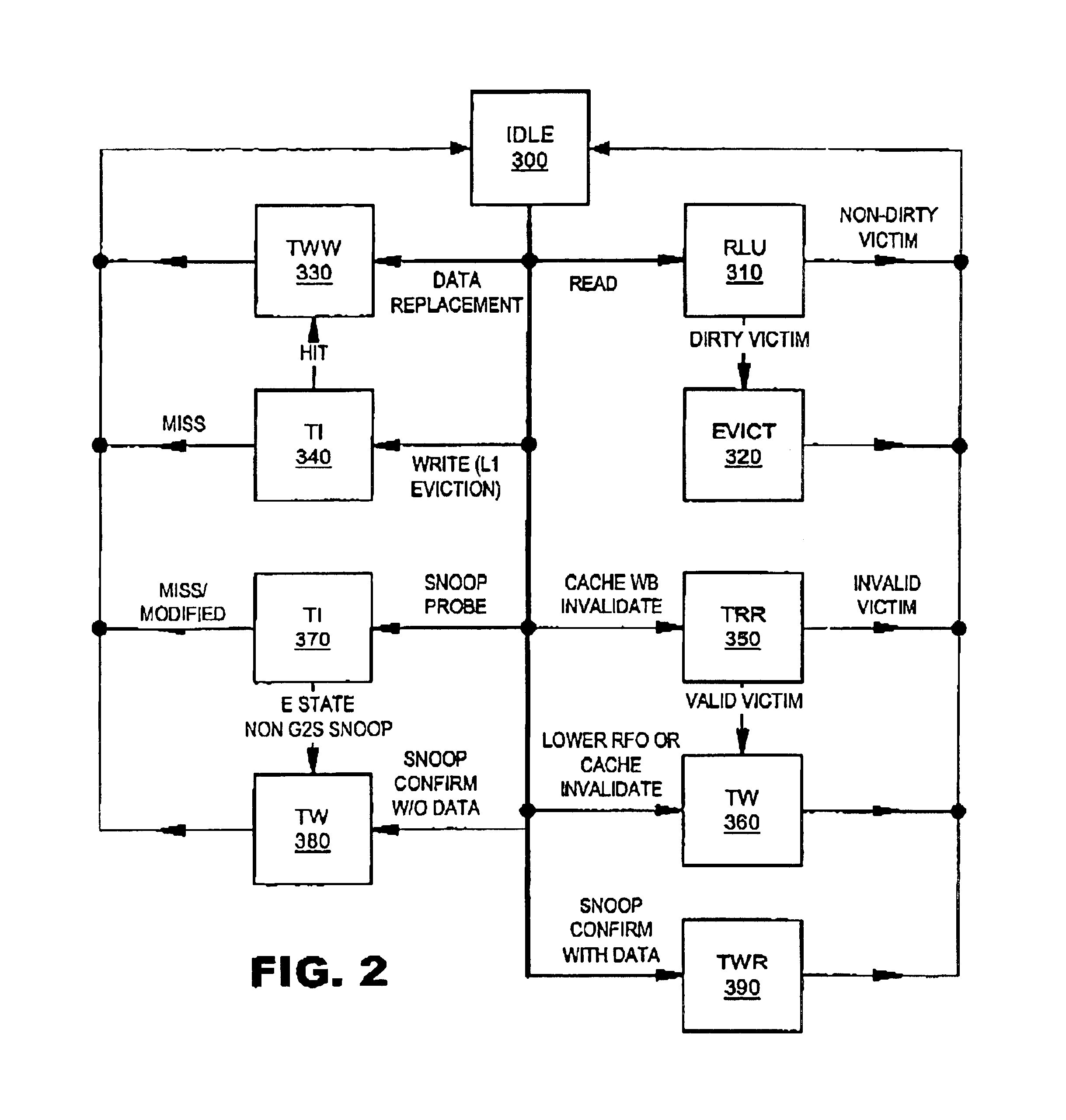Low power cache architecture
a low-power cache and architecture technology, applied in the field of cache architecture, can solve the problems of increasing the power consumption of modern processors, destroying the heat generated by processors, and increasing the power consumption of integrated circuits, especially those of processors
- Summary
- Abstract
- Description
- Claims
- Application Information
AI Technical Summary
Problems solved by technology
Method used
Image
Examples
Embodiment Construction
Embodiments of the present invention provide a processor cache in which cache circuits are mapped into one or more logical modules. Each module may be powered down independently of other modules. Caches typically operate according to microinstructions. For many microinstructions, certain modules will not participate in the cache operations. Power savings may be achieved by powering down modules on a microinstruction-by-microinstruction basis.
FIG. 1 is a block diagram of a processor cache according to an embodiment of the present invention. According to the embodiment, the cache 100 may be populated into a plurality of cache entries 110. The embodiment of FIG. 1 illustrates the entries 110 organized into sets and ways. As shown in FIG. 1, way 0 may include a predetermined number N of cache entries. Each cache entry 110 may be organized into a tag field 120, a data field 130 and a state field (labeled “S”). Data to be stored in the cache 100 may be stored in the data fields 130 of the...
PUM
 Login to View More
Login to View More Abstract
Description
Claims
Application Information
 Login to View More
Login to View More - R&D
- Intellectual Property
- Life Sciences
- Materials
- Tech Scout
- Unparalleled Data Quality
- Higher Quality Content
- 60% Fewer Hallucinations
Browse by: Latest US Patents, China's latest patents, Technical Efficacy Thesaurus, Application Domain, Technology Topic, Popular Technical Reports.
© 2025 PatSnap. All rights reserved.Legal|Privacy policy|Modern Slavery Act Transparency Statement|Sitemap|About US| Contact US: help@patsnap.com



